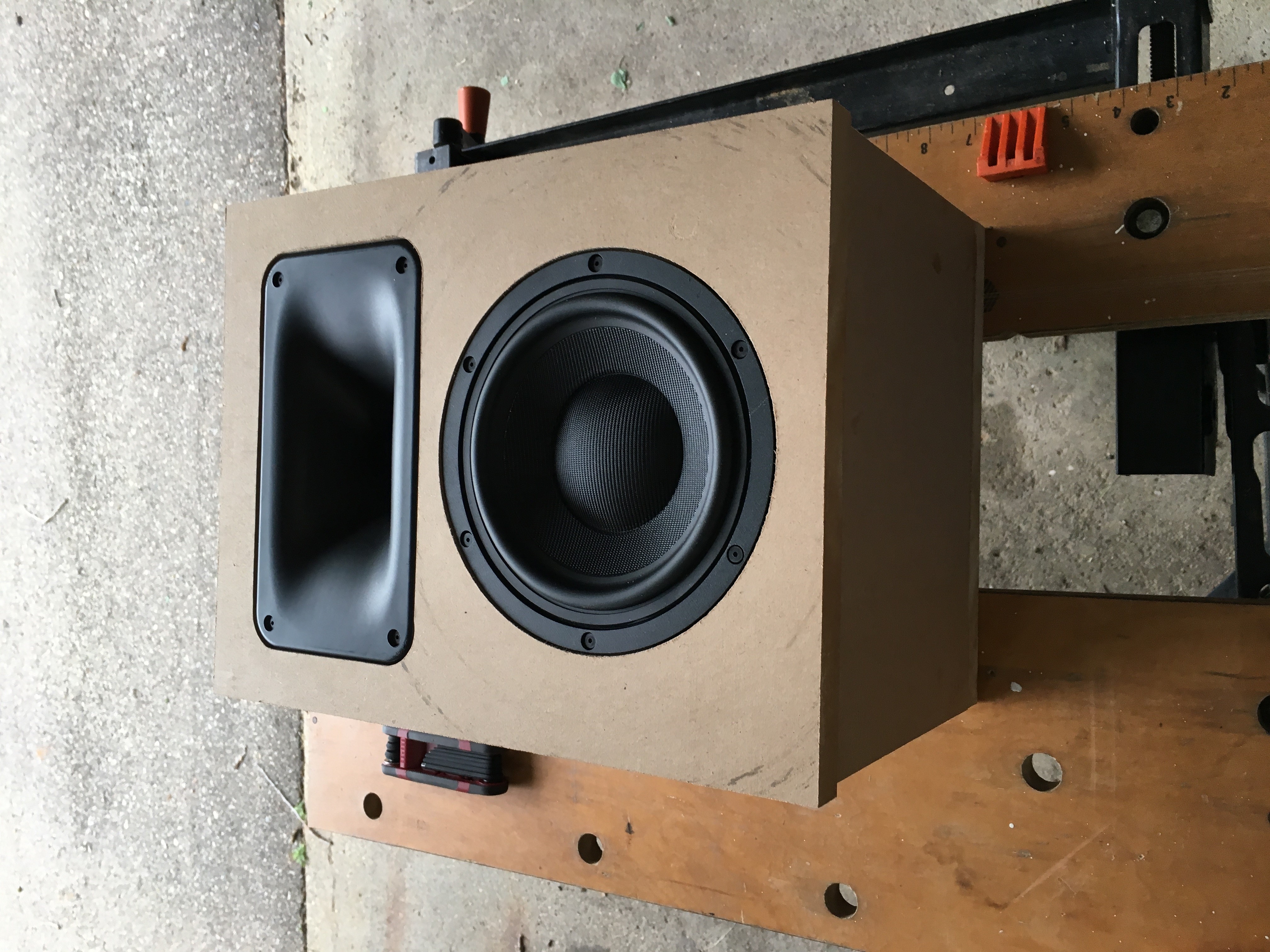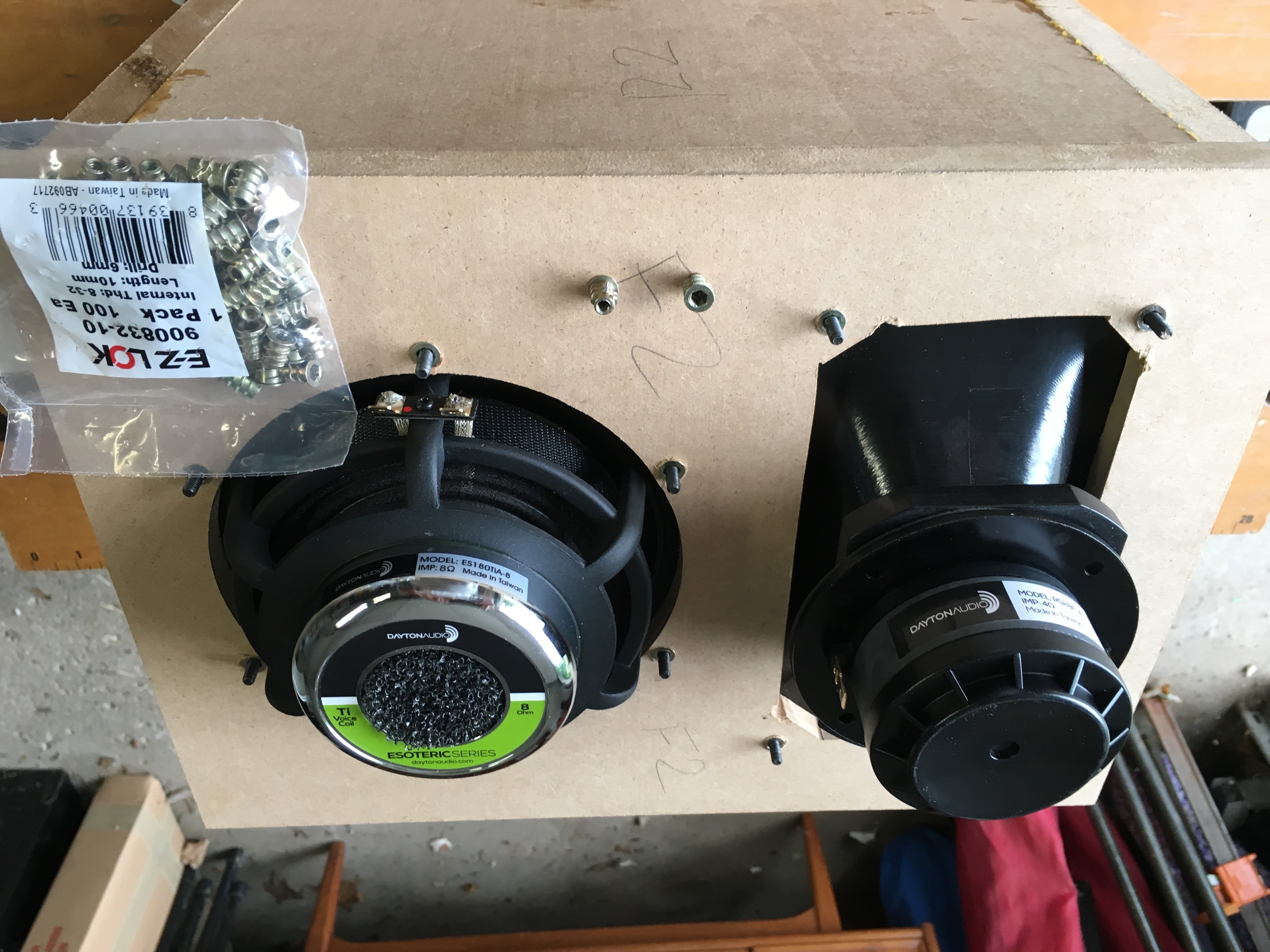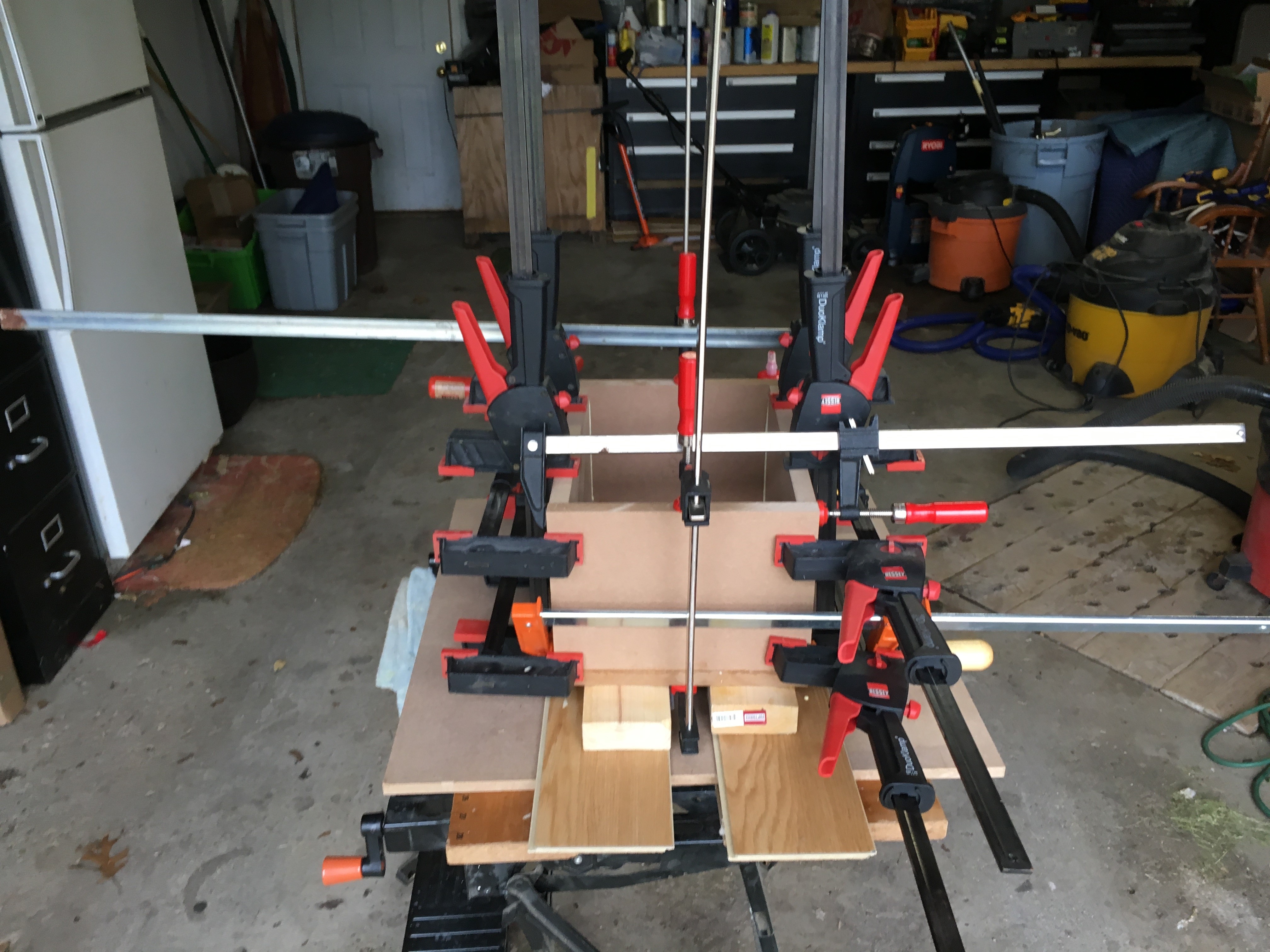Site Links
Howdy, Stranger!
It looks like you're new here. If you want to get involved, click one of these buttons!
Quick Links
Categories
Who's Online (0)
Pete's Build
This will be a build thread for a set of two ways with sub for my nephew Pete. Drivers are the Dayton ES180, RS28F (original) in the SEOS waveguide and a single UM10 in its own box. I'm hoping to have these completed this summer.
Here are a few pics of the cabinet construction just to kick things off.
I really like the threaded inserts for mounting the drivers, but they do require a fair amount of precision installing them. Here's what works for me:



Here are a few pics of the cabinet construction just to kick things off.
I really like the threaded inserts for mounting the drivers, but they do require a fair amount of precision installing them. Here's what works for me:
- Align the driver in its cut-out as desired.
- Mark the driver hole locations using a pencil, filling in the circles completely.
- Remove the driver.
- Using a drill bit that is the same size as the resultant circle, align the baffle on the drill press table so the bit exactly matches the circle.
- Clamp the baffle to the table securely.
- Swap the drill bit with the one needed to cut the hole (6 mm in my case).
- Turn on the press and just touch the bit to the board so only the circle is removed, confirming the alignment.
- Drill the hole.
- Turn off the press and vacuum up the dust (you are wearing your respirator, are you not?!!).
- Swap the bit back to the one in step 4 and repeat from there for the next hole.





Comments
InDIYana Event Website
I never water down the glue to seal MDF. That's asking for trouble. I usually use Elmer's white glue. I either rub it in with my fingers or use a brush.
Another builder recently showed a pair of MDF cabs sealed with superglue applied with a razor blade. He's had them 8 months without any edge-creep. Said it took about 2 tubes per cab, and they're about 20 ltrs or so. The glue sets in about 30 seconds, so you have to move fast. I as VERY impressed with the results.
InDIYana Event Website
You are giving me serious competition for the slowest builder, but that's a race that I'm happy to lose.
InDIYana Event Website